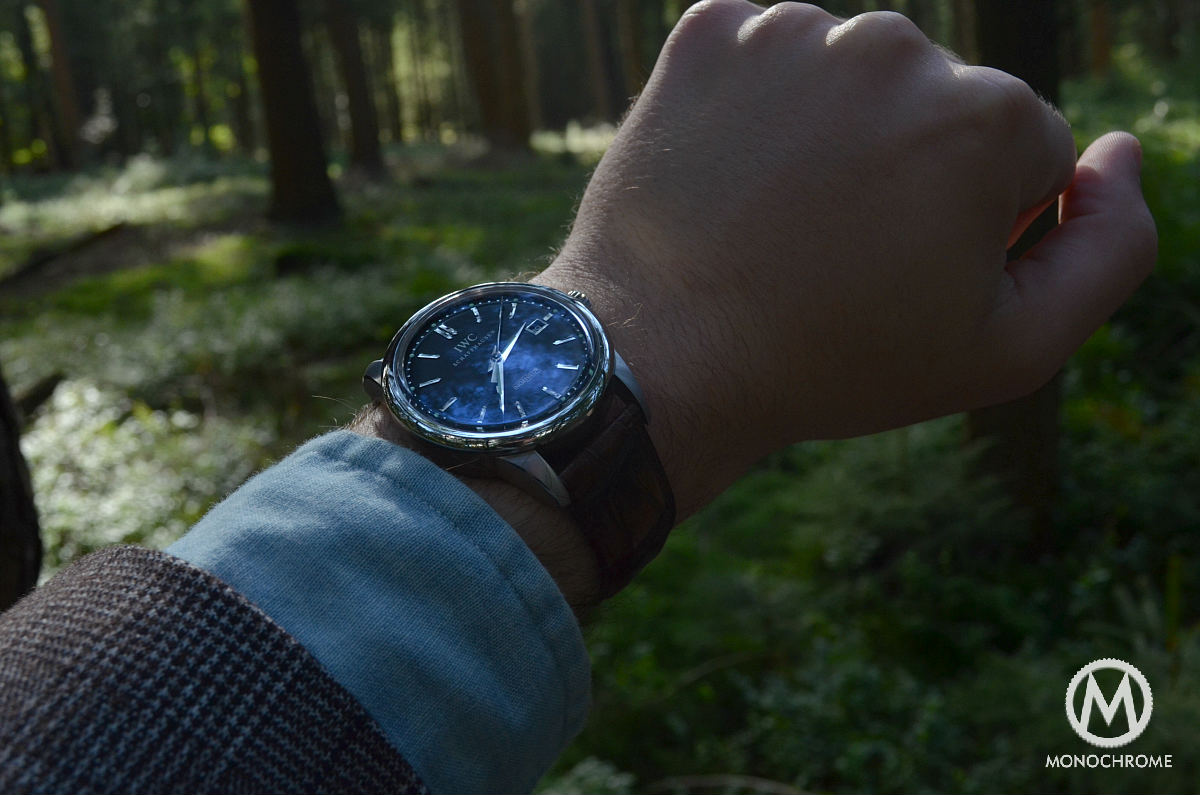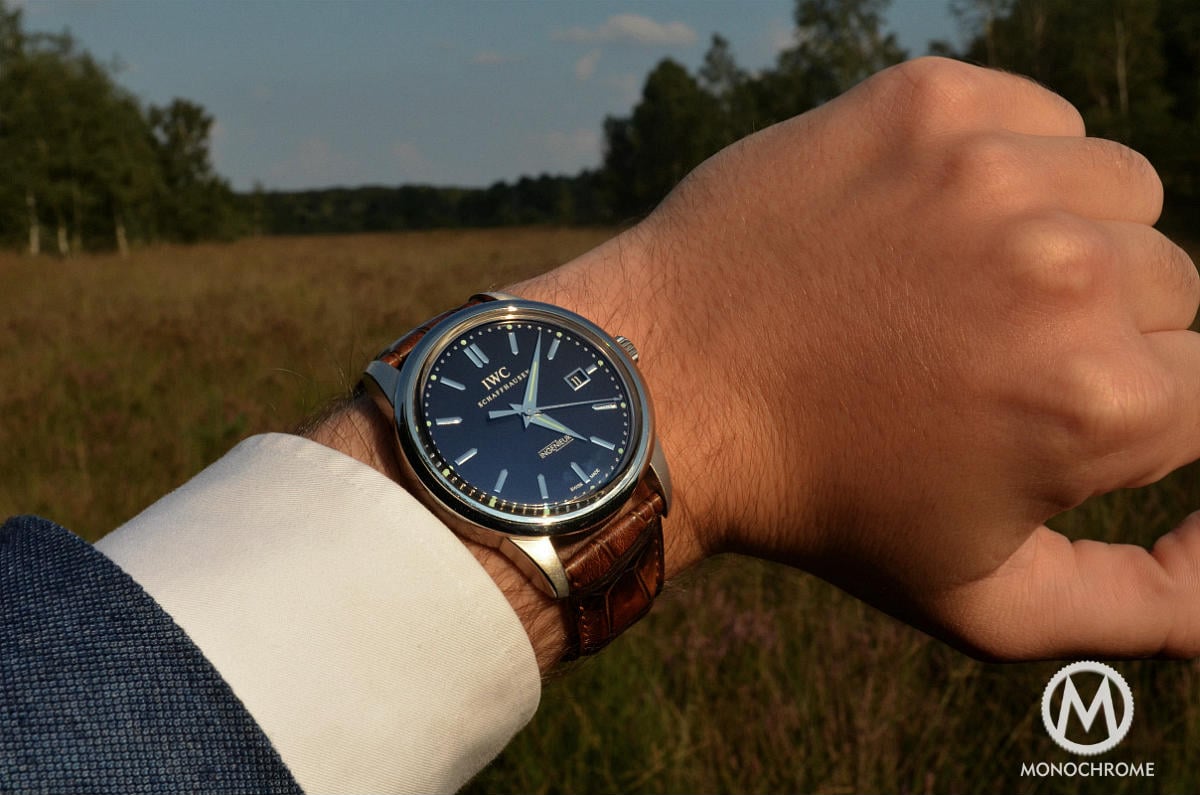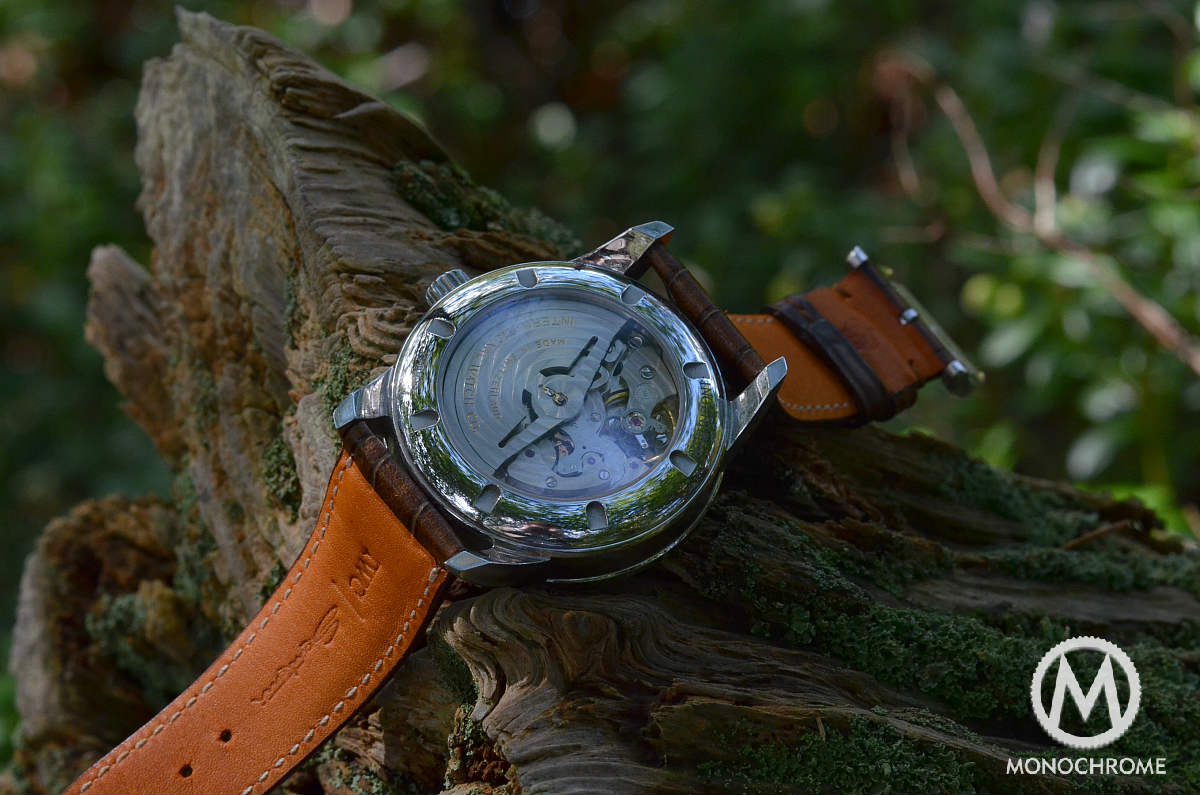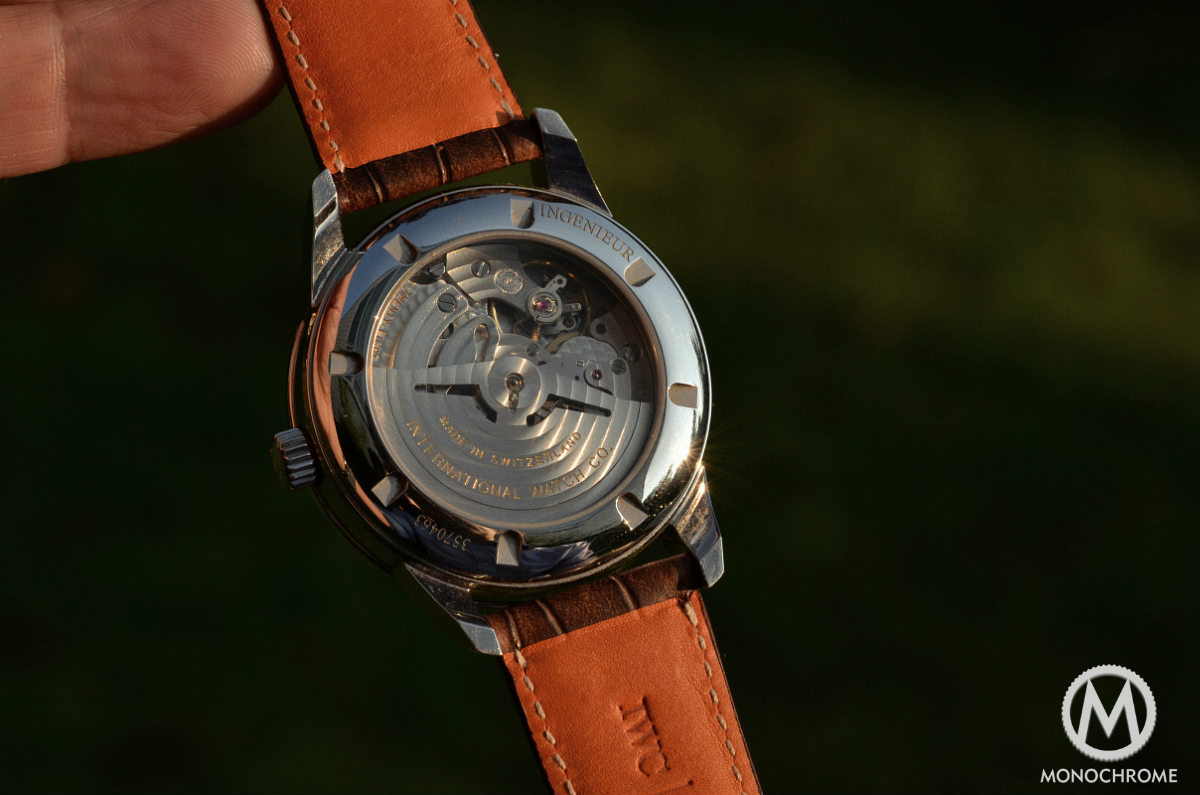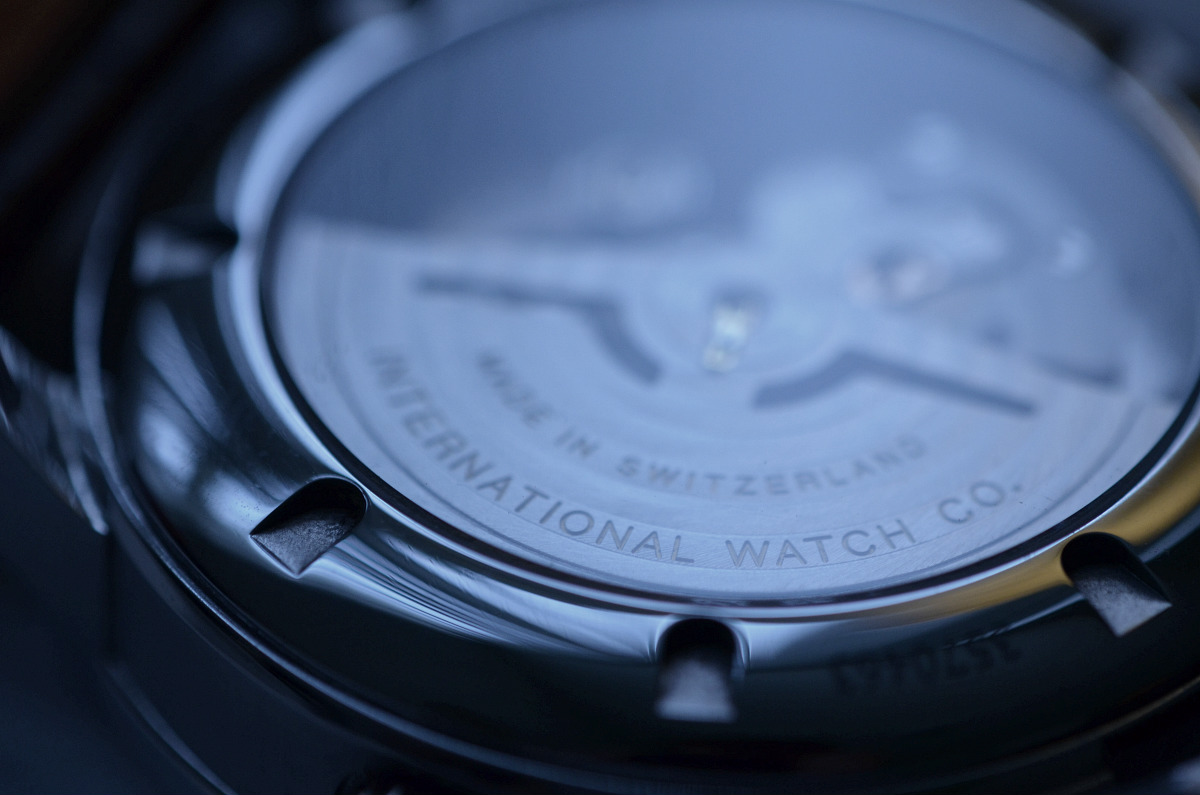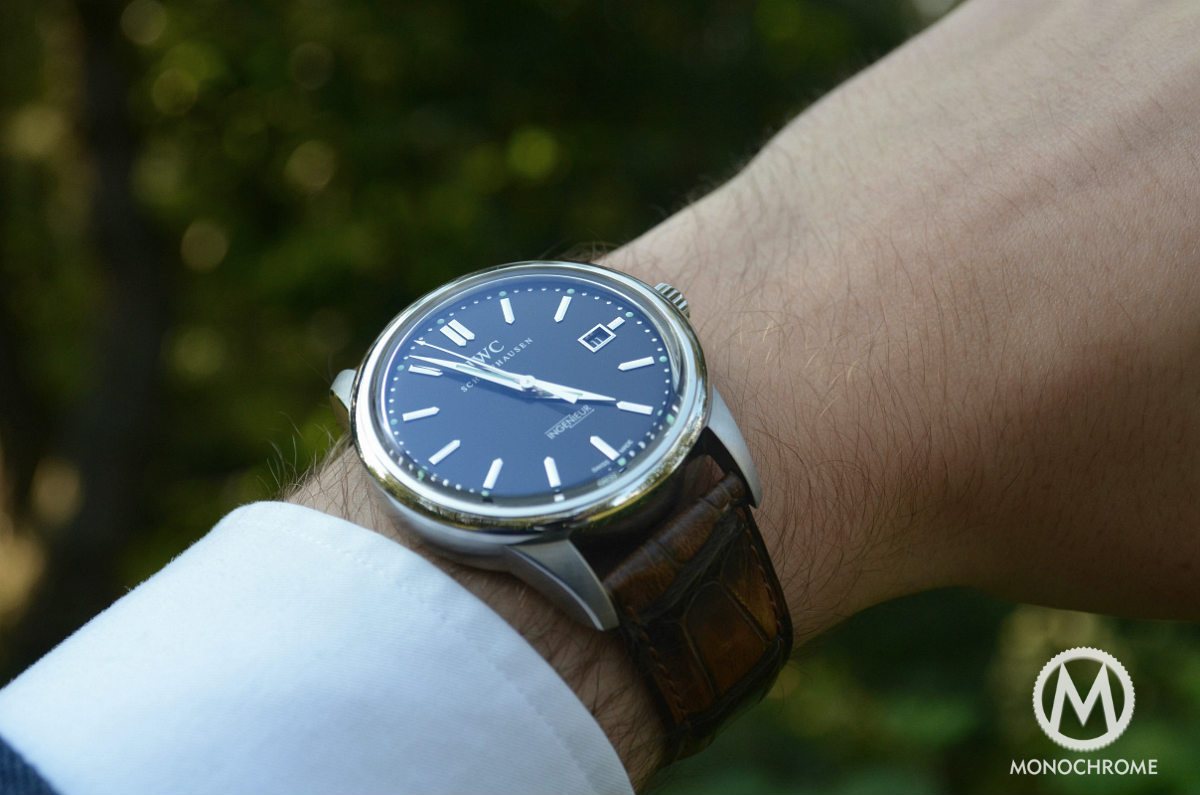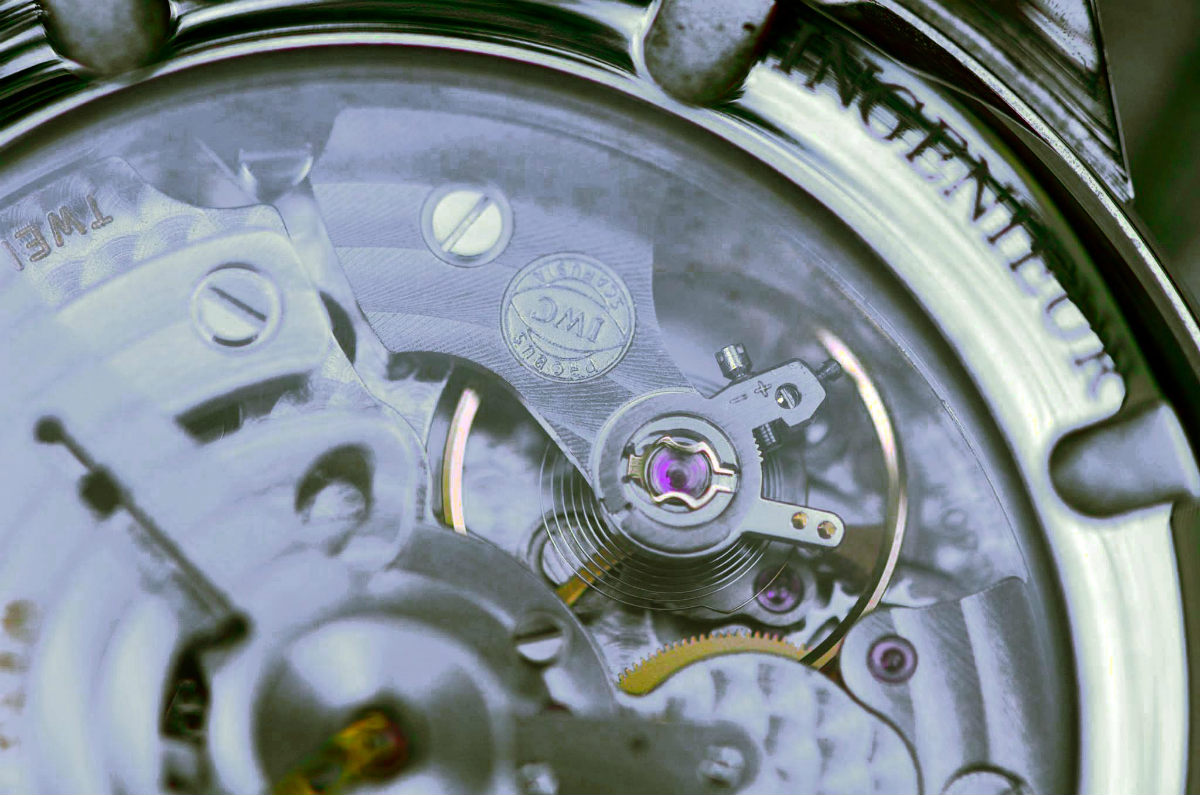The Collector’s Series: Koen’s IWC Vintage Ingenieur
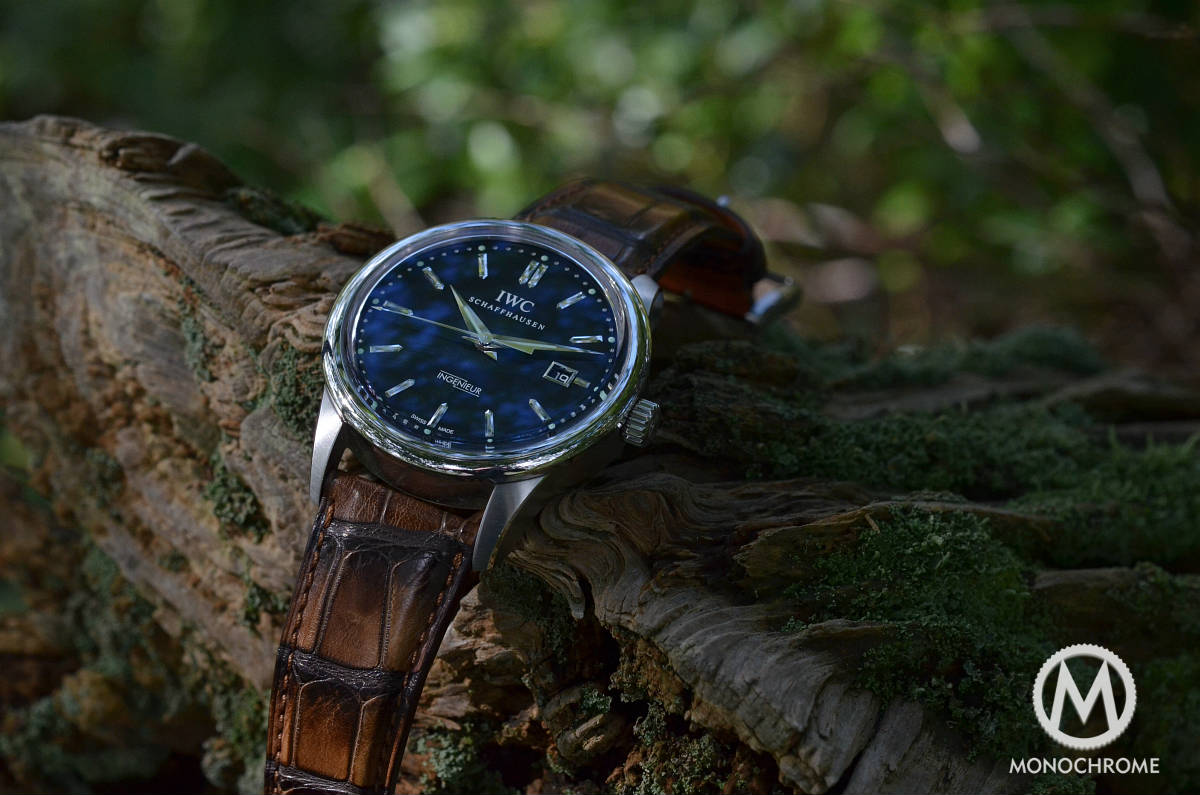
It is with great pleasure we welcome Koen as a contributor to the Monochrome-Watches team he is extremely active on the IWC forum and a truly passionate watch geek. When we first sat down on the Collector Series with Koen, we discussed his stunning Vintage IWC Portofino. On this occasion, in a rather overcast London (no surprise there…), his second instalment of the series, we discussed how his passion for IWC lead him to the glorious IWC Vintage Ingenieur.
First off let’s take a look back. The first IWC Ingenieur was unveiled in 1955. It was equipped with the first bidirectional automatic movement and developed by the then Technical Director, Albert Pellaton. It wasn’t famous until the early 1970s, when a diver’s helmet inspired freelance watch designer Gérald Genta (yes, that’s the same gentleman who designed the AP Royal Oak and Patek’s Nautilus.) His mission was to redesign the Ingenieur. Genta designed the Ingenieur SL, Reference 1832, which was launched in 1976. It was a bold design which had to be both sporty and maintain the technical appeal the brand had always stood for. From a design perspective, instead of trying to conceal the screws or functional bores, Genta left them plain for all to see on the bezel.
In 2008, IWC released a collection called the “Vintage” Collection, a range of stunning vintage-inspired references, in addition to the contemporary collections. For any collector, having that history attached to a reference makes all the difference. Although this IWC Vintage Collection was based on original vintage references, they were not designed to be 1:1 design reproductions.
Do you tend to focus on IWC as a brand?
I do not really focus on one brand when collecting watches. In my opinion, you don’t have to stick to one brand because there are just so many great watches out there. The Vintage Collection Ingenieur is however the only watch I own that is from the same brand as another, the IWC Vintage Portofino we discussed previously. It also happens to be from the same collection, so I guess there are always exceptions to every rule.
When did you come to own the IWC Vintage Ingenieur?
I came to own this watch pretty soon after getting my Portofino. When I turned eighteen, my aunt, who knows I am a maniac when it comes to watches, wanted to give me something very special. Something that I would enjoy for a long period of time. At the time I was saving up for my next big purchase. I had set my mind on the Vintage Collection Ingenieur. She knew I was saving up for that watch and she decided to help me financially to get the watch. When I bought the watch, I got a great deal. I received some discount and I was also able to visit the factory in Schaffhausen. It was of course an amazing experience. You really should buy an IWC, just to visit the factory. When you really get to see with your own eyes with how much passion and precision these watches are manufactured, you are truly able to understand that watchmaking is a very special art and not just a job. It was a privilege to witness.
The Ingenieur is more of a tool watch. How do you feel about tool watches as opposed to dress watches?
What stood out for me about the Ingenieur watch is that it is a very, very nice classical looking watch. However, it is a little bit to thick and too large to be considered a dress watch. At the same time, to me it is also not a true tool watch, although it is was designed as such. In my opinion it is too elegant and beautiful to be just a functional instrument. Also, since its origin was to be a tool watch for engineers, the design was gradually adjusted for the broader public.
The tool watch design features give the Ingenieur a bit of a younger and more robust twist. For someone my age, a watch with all features of a dress watch is a little bit too formal to wear as an everyday watch. I switched out the regular black alligator strap for a nice Santoni strap. When you look at the watch now, it is clearly a very nice watch with a classical and timeless identity, while being robust and youthful. This adjustment makes this watch a perfect everyday watch. I wear the Ingenieur most of the week and sometimes also to special events, but I prefer my Portofino for special occasions, because it’s dressier.
So for me the Ingenieur is neither a dress watch, nor a true tool watch. I like it for being something in between and think of it as a dressy everyday watch. It is pretty much the best of both worlds. I can appreciate that.
Can you tell us a bit more about the history of the Ingenieur range?
IWC had a history in functional pilot-watches. In the mid 1950’s, they wanted to make a collection of tool watches for engineers, technicians and scientists. If you want a watch that fits the needs of these people, you have to come with features that make the watch suitable for the environment these people work in. The watches had to be anti-magnetic, very precise and water resistant.
The watches we are talking about came on the market in 1954 and 1955 with the references 666A (calibre 852) and 666AD (calibre 8521). At that time, these watches were available in steel and gold. Both watches were very similar. The only difference is a date window at 3 on the reference 666AD.
The Ingenieur’s initial key feature was it being anti-magnetic. IWC and Rolex were the first brands to come up with this idea. Where IWC came out with an anti-magnetic watch in 1954, Rolex put this feature in their MilGauss watches in 1956. MilGauss stands for 1000 Gauss, which is a unit for the strength of a magnetic field. (1000 Gauss is roughly equivalent to 80.000 A/m, which is an alternative measurement).
To achieve this protection against magnetic fields, IWC started out with the Mark XI watch, which was their military watch. By using different hands and dials IWC gave this watch a more civilian look. To get the anti-magnetic properties, IWC placed the movement in a soft iron inner case. This way, the dial, the movement’s ring and the case back worked together to protect the watch for magnetic fields up to 80.000 A/m. You have to imagine that this was over 15 times the required resistance to fit the Swiss norm to consider a watch to be anti-magnetic.
Besides the anti-magnetic feature, the Ingenieur was also quite remarkable for two different reasons. First, the watch was secured to water for a depth up to 100 meters. This was quite special in the 1950’s. Secondly, the watch was also equipped with a Pellaton winding system – not strange, if you consider that Albert Pellaton, who was the technical director at the time, was responsible for both the references 666A and 666AD. The Pellaton winding system is a system which winds the watch, no matter which way the rotor spins. This made the watch very accurate. Finally it got a recognizable logo in the form of the lighting which surrounded the word “Ingenieur”.
How have the Ingenieur looks evolved over the years?
When we look at the watches that are in IWC’s current Ingenieur range, they do not look like the two first classical Ingenieur at all. During the 1970’s, IWC approached Gerald Genta with a defined task: adapting the Ingenieur watch to be suitable for modern times. Gerald Genta was a very famous freelance wristwatch designer. He was involved in designing many watches which are famous today. To give a few examples in chronological order:
- Omega Constellation (1959)
- Patek Philippe Golden Ellipse (1968)
- Audemars-Piguet Royal Oak (1972)
- IWC Ingenieur (1976)
- Patek Philippe Nautilus (1976)
- Pasha de Cartier (1996)
When we take a look at the watches Genta designed during the1970’s, there are many similarities. So how can we define the identity of a 1976 Ingenieur?
When we look at the watch, it has a pretty specific shape: the so called Ingenieur SL shape (nicknamed Ingenieur Jumbo, because 40mm was unusually big at the time). The shape of the case is tonneau, while the shape of the bezel is round. Something which is very specific for the bezel, is that is has five tiny holes and screws. These are used to open the case. This is almost identical to the Audemars-Piguet Royal Oak (which has eight holes and screws). The watch Genta designed for IWC also had a guilloche dial.
After these changes, what stayed the same is the combination of features: anti-magnetic, water-resistance and accuracy. The collection Genta created existed of three references. The anti-magnetic mechanical one (calibre 8541B), the non anti-magnetic mechanical one (calibre 8541ES) and also a quartz version (calibre 2405) – both in steel, steel with 14k gold and full 18k gold. Due to the quartz crisis, there were only 1000 pieces made. This original watch is really a rarity.
The designs of the watches in the current IWC Ingenieur range are based on Gerald Genta’s design. That’s why they look so different from the earliest watches that started the collection.
What do you think the Ingenieur say’s about you when people see it on the wrist?
Funny question! Actually less than a month ago, I attended an IWC collectors GTG in Amsterdam. While we were having lunch, I recognized another collector and friend of mine wearing a very handsome watch. I could not really recognize which watch it was since I was sitting on the other end of the table and we were with around 15 guests. After we finished our lunch, he walked towards me and showed me the watch he was wearing that day. It turned out to be the exact same Ingenieur as mine (but in white gold). In my mind this confirmed I made the right decision to get one myself (in steel). I think this watch is like a statement watch. It says I can appreciate a timeless design and very high quality in a discreet way. I don’t really think that is specific to this watch. I think most watches IWC (and Jaeger-LeCoultre) have in their collection are like that. Especially when it comes to timelessness, I believe IWC does a fantastic job. In almost all the collections, you can recognize design elements from the earliest editions. Therefore, I am convinced that this watch has a design which we are not going to appreciate in the years to come, but a design we will keep appreciating for many years to come.
What three words would you use to describe your Ingenieur?
Very, very lovely

